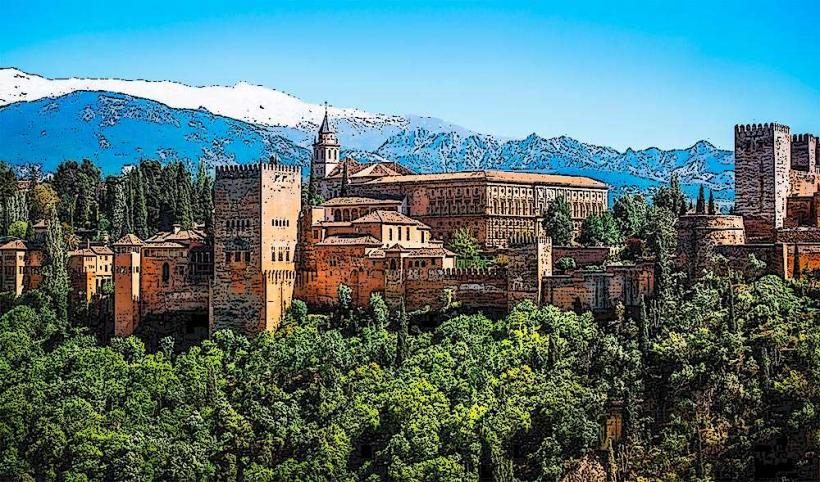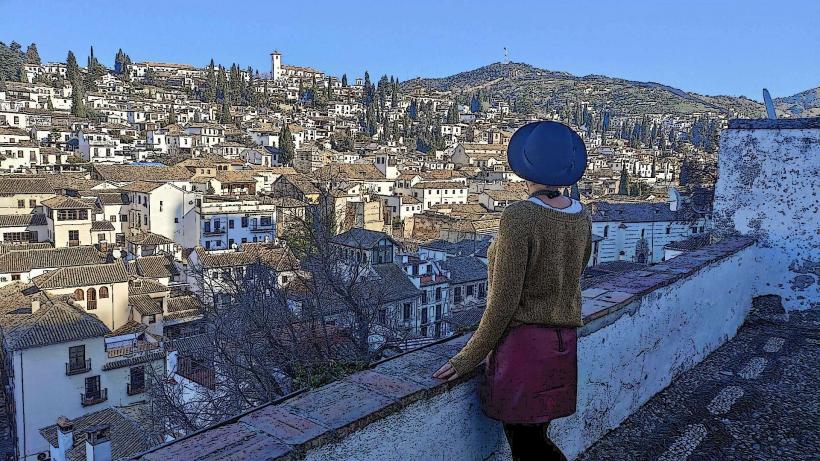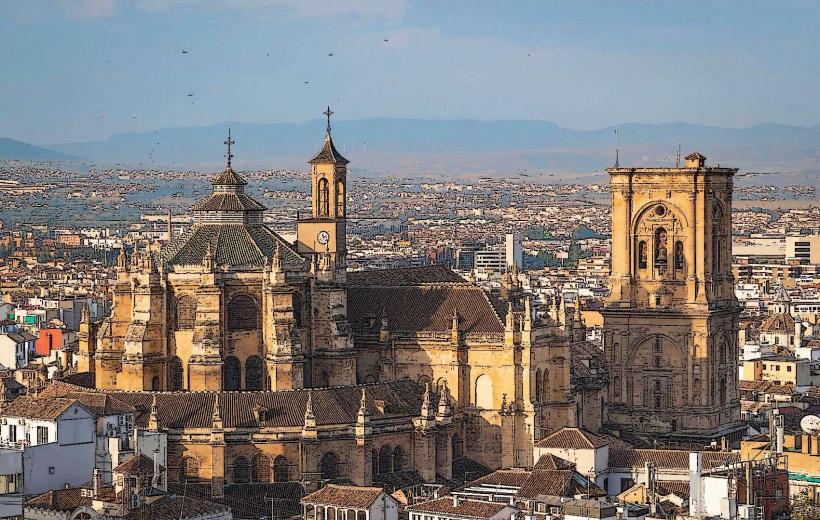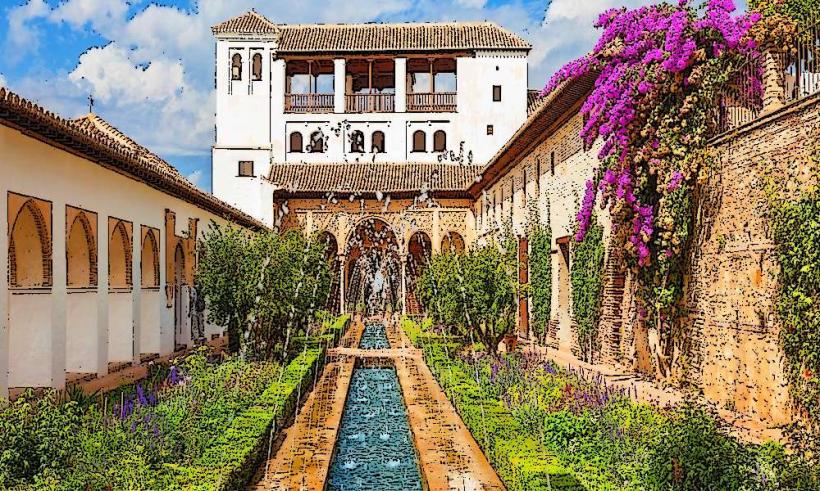Information
City: GranadaCountry: Spain
Continent: Europe
Granada is a captivating city located in the foothills of the Sierra Nevada mountains in southern Spain. Known for its stunning Moorish architecture, rich history, and vibrant culture, Granada has long been a key cultural and political hub in the Andalusian region. Here’s a detailed look at what makes Granada such a unique and fascinating destination:
Historical Background
Granada’s history is deeply intertwined with both Christian and Muslim heritage, with a rich tapestry of Moorish rule, Christian reconquest, and Andalusian culture.
- Moorish Period (711–1492): Granada was one of the last Muslim strongholds in Spain during the Reconquista, the period when Christian kingdoms gradually regained control over the Iberian Peninsula. The Nasrid Dynasty ruled Granada for nearly 250 years, and their reign left a lasting mark on the city, particularly through the construction of the Alhambra, the city’s most famous landmark.
- Christian Conquest (1492): In 1492, Ferdinand and Isabella, the Catholic Monarchs, captured Granada from the Moors, marking the end of Muslim rule in Spain. This event is significant not only for its historical impact but also for the symbolic meaning of the city’s conquest. Following the Reconquista, many Muslims and Jews were either forced to convert to Christianity or were expelled.
Key Attractions in Granada
The Alhambra
- The Alhambra is undoubtedly the jewel of Granada and one of the most iconic landmarks in Spain. This palace-fortress complex was built by the Nasrid Dynasty in the 13th and 14th centuries. It served as the royal residence and administrative center of the Muslim kings of Granada.
- The Alhambra is a masterpiece of Islamic architecture, featuring intricate mosaic tile work, delicate stucco carvings, and lush gardens such as the Generalife. The Alcazaba, the oldest part of the Alhambra, offers spectacular views of the city and the surrounding countryside.
- The Court of the Lions, Hall of the Ambassadors, and Nasrid Palaces are some of the most famous parts of the Alhambra, showcasing the intricate blend of Moorish, Renaissance, and Christian architectural styles.
The Albayzín
- The Albayzín (also spelled Albaicín) is the old Moorish quarter of Granada. It is characterized by narrow, winding streets, whitewashed houses, and terraces with views of the Alhambra. The area has retained much of its Islamic charm, with beautiful plazas and traditional Arab-style houses.
- The Mirador de San Nicolás offers the best view of the Alhambra, especially at sunset, when the palace glows in golden hues against the backdrop of the Sierra Nevada mountains.
- This neighborhood also features remnants of the Granada Mosque, the El Bañuelo, an ancient Arabic bathhouse, and various medieval Andalusian homes.
Granada Cathedral and Royal Chapel
- The Granada Cathedral (Cathedral of the Incarnation) is a masterpiece of Spanish Renaissance architecture. Completed in 1561, it was built on the site of the Great Mosque of Granada after the Christian reconquest.
- Adjacent to the cathedral is the Royal Chapel of Granada, where the Catholic Monarchs, Ferdinand and Isabella, are buried. The chapel is an important historical site and features ornate Gothic architecture and religious artworks.
Generalife
- The Generalife is a beautiful palace and garden complex located near the Alhambra. It was originally the summer residence of the Nasrid rulers. Its terraced gardens, flowing fountains, and reflective pools provide a peaceful retreat and showcase the Islamic tradition of garden design, which emphasizes water and greenery as symbols of paradise.
The Hammam (Arabian Baths)
- Granada also offers a chance to experience traditional Arab baths, known as Hammams. These ancient bathing rituals are based on the same traditions that were popular during the Islamic period. The Hammam Al Ándalus offers a luxurious and relaxing experience, where visitors can enjoy warm, cold, and hot pools along with a traditional massage.
Carmen de los Mártires
- This historical garden, located just below the Alhambra, offers beautiful views and tranquil green spaces. The gardens are beautifully landscaped with fountains, ponds, and a variety of plants. It’s a great place to escape the crowds and enjoy a moment of peace.
Culture and Festivals
- Flamenco: Granada, like much of Andalusia, is famous for its flamenco tradition. The Sacromonte neighborhood is known for its flamenco caves, where visitors can watch live performances in intimate settings. Flamenco is an integral part of the city's cultural identity, with gypsy influences dating back centuries.
- Holy Week (Semana Santa): Granada is renowned for its Semana Santa processions, where elaborate religious floats are carried through the streets. The processions are deeply rooted in the city’s Christian history and attract thousands of visitors each year.
- Feria del Corpus Christi: Held in late spring, this festival celebrates the city’s patron saint with parades, music, and a fair atmosphere. The La Virgen de las Angustias procession is one of the highlights of this event.
- Granada International Festival of Music and Dance: This annual festival showcases classical music, flamenco, and dance performances at various venues throughout the city, including the Alhambra.
Culinary Scene
Granada is also a haven for food lovers. The city is known for its tapas culture, where many bars serve free tapas with your drink order. Some of the best local specialties to try include:
- Pisto: A vegetable stew similar to ratatouille.
- Tortilla del Sacromonte: A traditional Granada omelette made with eggs, offal, and vegetables.
- Jamón Serrano: Cured ham from the region.
- Churros con Chocolate: A popular Spanish breakfast or snack, fried dough served with thick chocolate.
Climate
Granada has a Mediterranean climate, with hot summers and mild winters. The city can get quite hot during the summer months, with temperatures reaching over 35°C (95°F), especially in July and August. Winters are relatively mild, but the city’s proximity to the Sierra Nevada mountains means it can experience colder temperatures, and snow is not uncommon in the winter.
Conclusion
Granada is a city where history, culture, and natural beauty converge. The legacy of its Islamic past is still visible in its architecture and streets, while its vibrant atmosphere and stunning surroundings make it a top destination for travelers. Whether you’re exploring the Alhambra, wandering the narrow streets of the Albayzín, or enjoying the local cuisine, Granada offers a rich and immersive experience that captivates visitors from around the world.





